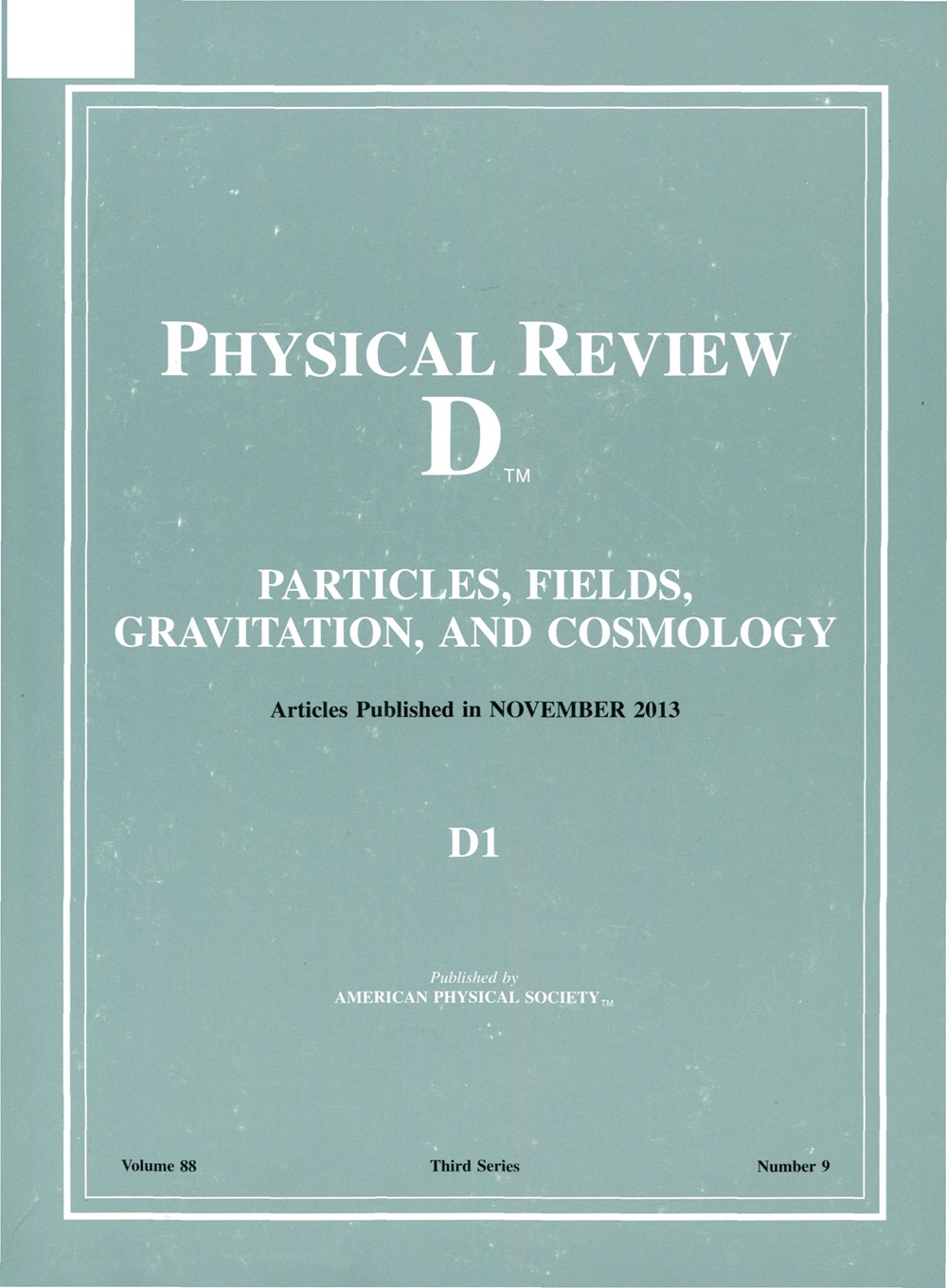Can we identify primordial black holes? Tidal tests for subsolar-mass gravitational-wave observations
IF 5.3
2区 物理与天体物理
Q1 Physics and Astronomy
引用次数: 0
Abstract
The detection of a subsolar object in a compact binary merger is regarded as one of the smoking gun signatures of a population of primordial black holes (PBHs). We critically assess whether these systems could be distinguished from stellar binaries, for example composed of white dwarfs or neutron stars, which could also populate the subsolar mass range. At variance with PBHs, the gravitational-wave signal from stellar binaries is affected by tidal effects, which dramatically grow for moderately compact stars as those expected in the subsolar range. We forecast the capability of constraining tidal effects of putative subsolar neutron star binaries with current and future LIGO-Virgo-KAGRA (LVK) sensitivities as well as next-generation experiments. We show that, should LVK O4 run observe subsolar neutron-star mergers, it could measure the (large) tidal effects with high significance. In particular, for subsolar neutron-star binaries, O4 and O5 projected sensitivities would allow measuring the effect of tidal disruption on the waveform in a large portion of the parameter space, also constraining the tidal deformability at level, thus excluding a primordial origin of the binary. Vice versa, for subsolar PBH binaries, model-agnostic upper bounds on the tidal deformability can rule out neutron stars or more exotic competitors. Assuming events similar to the subthreshold candidate SSM200308 reported in LVK O3b data are PBH binaries, O4 projected sensitivity would allow ruling out the presence of neutron-star tidal effects at CL, thus strengthening the PBH hypothesis. Future experiments would lead to even stronger () conclusions on potential discoveries of this kind.

我们能识别原始黑洞吗?亚太阳质量引力波观测的潮汐测试
在紧凑双星合并中探测到亚太阳天体被认为是原始黑洞(PBHs)群体的烟枪特征之一。我们认真评估了这些系统是否可以与恒星双星(例如由白矮星或中子星组成的双星)区分开来,因为后者也可以填充亚太阳质量范围。与白矮星不同的是,来自恒星双星的引力波信号会受到潮汐效应的影响,而潮汐效应对于中等紧凑的恒星(如亚太阳质量范围内的恒星)来说会急剧增加。我们预测了利用当前和未来的 LIGO-Virgo-KAGRA(LVK)灵敏度以及下一代实验对推定亚太阳中子星双星的潮汐效应进行约束的能力。我们的研究表明,如果 LVK O4 运行观测到亚太阳中子星合并,就可以测量到具有高度意义的(大)潮汐效应。特别是对于亚太阳中子星双星,O4 和 O5 的预测灵敏度可以测量潮汐破坏对大部分参数空间波形的影响,还可以在 O(10%)水平上约束潮汐变形性,从而排除双星的原始起源。反之亦然,对于亚太阳PBH双星,与模型无关的潮汐变形能力上限可以排除中子星或更奇特的竞争者。假设与 LVK O3b 数据中报告的亚阈值候选者 SSM200308 类似的事件是 PBH 双星,那么 O4 预测灵敏度将允许排除 ≈3σ CL 存在的中子星潮汐效应,从而加强 PBH 假说。未来的实验将为这类潜在发现带来更有力(>5σ)的结论。
本文章由计算机程序翻译,如有差异,请以英文原文为准。
求助全文
约1分钟内获得全文
求助全文
来源期刊

Physical Review D
物理-天文与天体物理
CiteScore
9.20
自引率
36.00%
发文量
0
审稿时长
2 months
期刊介绍:
Physical Review D (PRD) is a leading journal in elementary particle physics, field theory, gravitation, and cosmology and is one of the top-cited journals in high-energy physics.
PRD covers experimental and theoretical results in all aspects of particle physics, field theory, gravitation and cosmology, including:
Particle physics experiments,
Electroweak interactions,
Strong interactions,
Lattice field theories, lattice QCD,
Beyond the standard model physics,
Phenomenological aspects of field theory, general methods,
Gravity, cosmology, cosmic rays,
Astrophysics and astroparticle physics,
General relativity,
Formal aspects of field theory, field theory in curved space,
String theory, quantum gravity, gauge/gravity duality.
 求助内容:
求助内容: 应助结果提醒方式:
应助结果提醒方式:


